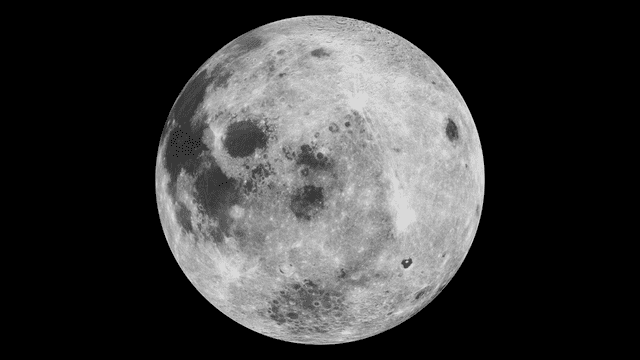Craters at the moon’s poles harbor frozen water, and new research is looking into how it got there.

Scientific Visualization Studio.
The viability and eventual success of long-term manned missions to the moon depend heavily on us locating a source of water up there. Water on the moon would allow astronauts to live on the moon much longer and for cheaper (which matters a lot when trying to get funding out of politicians) than if they had to ship it up from Earth.
The local drink
Recent research has shown that there may be water ice in the craters near the moon’s poles, and even traces of liquid water across its surface. However, until we understand how this water got there, we won’t have much success predicting where it will be found. A new study looking into the issue reports that lunar ice deposits could have multiple sources, some being more recent while others could be billions of years old.
The team used data on craters near the moon’s south pole, where evidence of water had been previously discovered, recorded by the Lunar Reconnaissance Orbiter. The researchers looked at the age of these craters, and report that any ice they contain couldn’t be older than 3.1 billion years. The ice deposits, the team explains, come in patches across the floor of individual craters, suggesting that they have been exposed to impacts by small meteorites over a long period of time.
The researchers used data from the Lunar Reconnaissance Orbiter to look at craters near the south pole where evidence of water has been found. They analyzed the age of these craters and found that the ice within them could not be older than 3.1 billion years. More evidence for the age of the ice comes from the patterns of deposits, which are patchy across the floor of the crater. This suggests the deposits have been impacted by small meteorites over a long period of time.
Most of the ice deposits seem to be quite ancient. Some of them, the team adds, especially those in smaller craters with sharper edges, appear to be the most recent. The authors say this is quite a surprise as “hadn’t really been any observations of ice in younger cold traps before,” Brown University researcher Ariel Deutsch explained in a statement.
“There have been models of bombardment through time showing that ice starts to concentrate with depth. So if you have a surface layer that’s old, you’d expect more underneath,” Deutsch adds.
The study fleshes out our understanding of resource availability on the moon, knowledge which can make or break future long-term missions.
“When we think about sending humans back to the Moon for long-term exploration, we need to know what resources are there that we can count on, and we currently don’t know,” co-author of the study, Professor Jim Head of Brown University, said in the same statement.
“Studies like this one help us make predictions about where we need to go to answer those questions.”
Along with other recent research looking into how lunar soil (‘regolith’) can be turned into breathable oxygen and raw metal for would-be colonists, the present findings suggest that the moon would be a much more bountiful place to live than we assumed up to now.
The paper “Analyzing the ages of south polar craters on the Moon: Implications for the sources and evolution of surface water ice” has been published in the journal Icarus.









